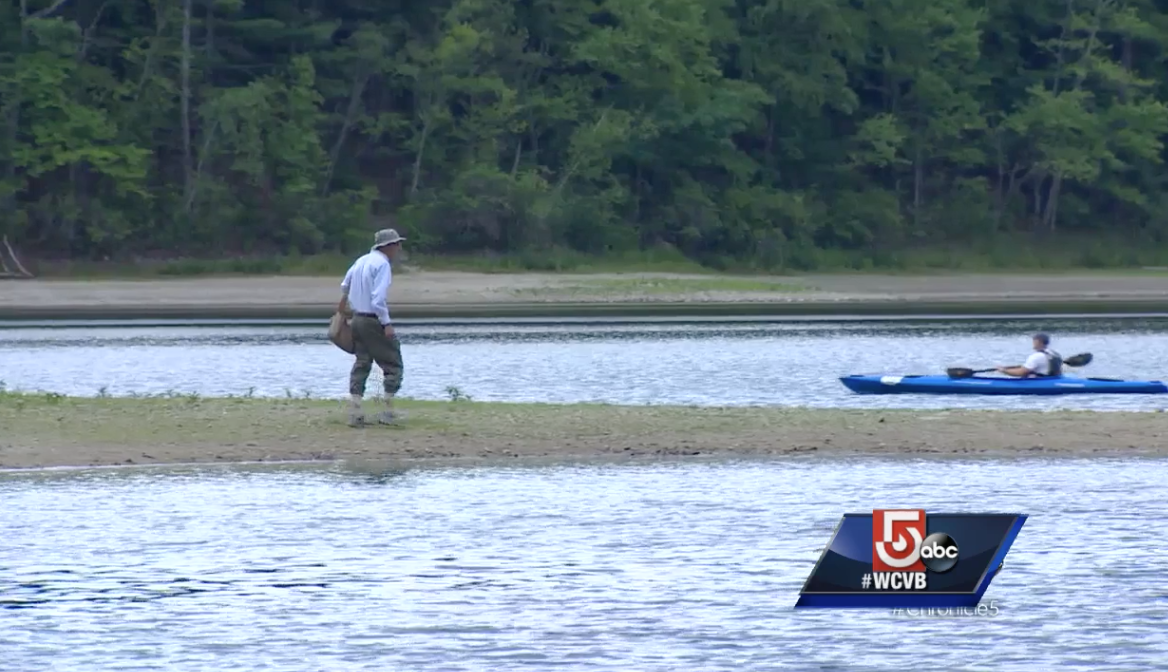The Ecological Society of
America Meeting each August is a chance to engage in the larger community of
ecologists, to connect our work with our colleagues, and to hear about the
exciting new research emerging across our discipline. At recent ESA meetings, I’ve
enjoyed the growing conversation, the so-called “meeting-within-a-meeting,” that
pops up on twitter and social media during ESA. Live-tweets and blogged recaps
provide a new level of engagement at ESA — alerting me to talks I might
otherwise miss in the sea of concurrent sessions, or allowing me to catch a
presentation, even if I can’t be physically present for it.
This year I worked the social media scene at the ESA Meeting in Fort Lauderdale as a PLOS Ecology Reporting Fellow, tweeting and blogging for the PLOS Ecology Community. PLOS created this new fellowship to foster communication and collaboration among ecologists at ESA and online. As a part of the Fellowship, I live-tweeted the session COS 14 — Climate Change: Ranges and Phenology II under the PLOS Ecology twitter handle (@PLOSEcology). I also blogged about science communication, recapping the popular Up-Goer Five Ignite Session that challenged speakers to present their research using only the 1,000 most common words in the English language. My other blog posts reflect my interest in the history of ecology; I was drawn to write about ESA sessions that repurposed old data and classic methods. In one post I worked with another Ecology Reporting Fellow to outline current uses of common gardens in climate change research. On my own, I wrote about iDigBio’s amazing and diverse organized oral session “Leveraging the Power of Biodiversity Specimen Data for Ecological Research.”
I had expected that the live-tweeting and blogging would make me a little frantic and prone to distraction, but I noticed instead that the Ecology Reporting Fellowship forced me to sit still. I was tied to a single session for the whole morning while I live-tweeted, instead of racing from one concurrent session to the next. This made my ESA experience both less and more spontaneous. I didn’t just wander from room to room as I have in the past; I had a strict schedule and little time to happen upon amazing talks from outside my corner of the ecology world. At past ESAs I have had incredible wander-luck: I actually found Richard Primack this way at ESA 2010, and I likely wouldn’t know about Robin Wall Kimmerer’s incredible writing or Eric Sanderson’s Welikia project if I hadn’t gotten lost in the corner of the convention center near their ESA sessions. But tweeting in place all the way through a session forced me to sit through talks that in previous years I would likely miss. I work exclusively in temperate ecosystems, but I stayed through the Climate Change: Ranges and Phenology talks that focused on Mediterranean and Semi-Arid and Savanna Type (SAST) biomes and watched engaging speakers tackle questions that are surprisingly relevant to my research. The blog post on common garden methodology grew organically out of sitting through the first Climate Change: Ranges and Phenology session on Monday afternoon. In previous years I likely would not have seen the repeated use of common gardens in various study systems, I would have jumped into the room for a talk or two, and then left to find coffee, or a talk on temperate plants or National Parks. The work of sitting, staying, and making deeper connections across talks in the same room would be valuable for anyone, whether or not they were live tweeting the session.
 |
| A sampling of my live-tweets from the Climate Change: Ranges and Phenology II Session |
 |
| Tweeting from my own account while I took notes for a blog post — the conversation expands beyond ESA to people who were not in Florida! |
Science communication begins with communicating among scientists. ESA is an opportunity for ecologists to share their work with each other, and many ecologists rose to the occasion with clear, engaging, and memorable presentations. From a social media perspective, I found that the best tweets and the best blog copy were often snippets of behind-the-scenes stories that were included in presentations, but would likely not make it into a publication. For example, Emily Meineke introduced her talk tracking evidence of herbivory captured in herbarium specimens by confessing the kitchen-table-procrastination origin story of her project. Nicole Rafferty asked the audience to imagine a grocery store in a future without pollinators before talking about her experiments tracing plant-pollinator migrations upslope in Colorado. The ESA Meeting is clearly full of creative science communicators: Fort Lauderdale featured a Fashion Show, a The-Moth-style evening of live story-telling, and a whole session of Up Goer Five talks. But in my opinion, some of the best story-telling took place in the small moments within traditional talks, and I hope my social media coverage of ESA celebrated and elevated these wonderful moments to the larger online community.
 |
| My poster at ESA — I wasn't just on social media all day! |






